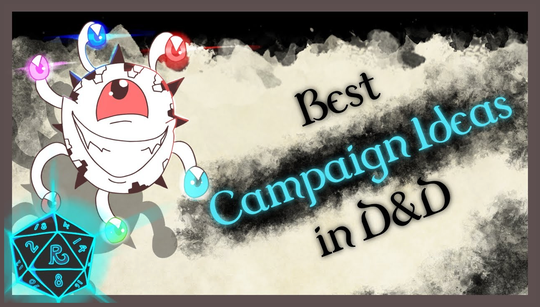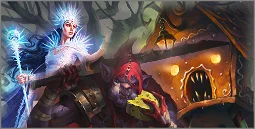Familiar story ideas seem to get recycled as campaigns go on, and that's partially why coming up with long ones can be a bit tricky. With so many dungeons cleared and enemies slain, the Dungeon Master needs to get creative if they're going for something special — a story that players can be invested in for more than a few sessions. So here are some ideas that may help.
Long DnD Campaigns
The absolute best thing about long DnD campaigns is when the group is invested in a big story that takes several D&D sessions to complete, where each game takes them one step further to complete a complex puzzle in what can take entire months, or even years, to get a climactic conclusion.
However, not every story needs to take that much time. Sometimes, a simple adventure with a shorter concept can be just as good, and a fresh breath during long journeys. So take these suggestions and mix and match how you want, coming up with countless campaign ideas you can base on these concepts.
Multiple options work better than one specific solution.
World Desolated by Constant Warfare
You can create utter chaos anywhere the party goes, and despite what subplot they’re currently facing, they know it’s because of this continuous fighting, tying everything together — just behind the curtains — so that they know they need to end this war. Take inspiration from Rage of Bahamut to see how this can be a good idea.
World Ruled by a Powerful Figure
Putting the world under the governance of someone more powerful than everyone else is a good option for a campaign because it focuses things on a single villain — a character the party must overcome. Insert Curse of Strahd here, and you get the idea. The land is ruled by a powerful figure who couldn’t care less about their people even if they tried; many suffer under such a ruler; taking them down is the only salvation.
Simple and effective. This type of storytelling is quite linear, focusing on a main fight that has to be won to restore peace, with just a few twists in between that keep the players on their toes.
Find the Artifact!
Insert Curse of Strahd again.
Evil Political Figure
Take the previous concept, and add some mystery to it. The world also has an evil ruler, but it’s not some big figure that appears everywhere; instead, its ruler controls important political figures from the shadows. What may start as a simple fight against a gang can turn into something much deeper. And you can even use said political figures as red herrings whenever the players find out they’re not really the true evil they were after all this time.
Powerful Monsters Roam through the World
This idea seems vaguer at first, but if you want to make things lead to something more, you can have monsters appearing in the world suddenly have a role of their own, putting the players in the role of re-establishing the natural order. And while they were just taking out bandits in the previous campaign, eventually they realise there’s a mastermind behind it all — aka the BBEG.
Find the MacGuffin!
Ah, the good old MacGuffin. Hidden somewhere in the world lies an artifact with incredible power: a weapon, an armor, a key to ultimate power. Or maybe a free-use wish spell. Either way, it’s something that’s just too attractive for everyone when it’s out in the open, and numerous NPCs are in search of this thing. Thus, it creates numerous enemies and the tension of finding the thing before anyone else does. This type of storytelling leads to a more enigmatic campaign.
Religious World's Baddies
While you may get the wrong idea about this depending on your personal beliefs, turning this whole thing into a fantasy world, where the majority of people believe in a set of Gods and seek to protect and serve them makes things more complicated because it’s tricky to distinguish between regular villains, who just don’t like anyone, and believers taking things too far.
That’s why you can use an evil deity’s followers as the campaign’s baddies. You can make them true evil opponents, performing sacrifices and whatnot, or they can have a nice-guy facade they keep, being somewhat accepted publicly. And they can even be a pseudo-legitimacy in their deeds, bringing the notion that they’re just following what their God asked them to do.
And it can all culminate with them attempting to bring back or resurrect their God — or whatever excuse you made for the God not to be around. Is there a more proper end?















